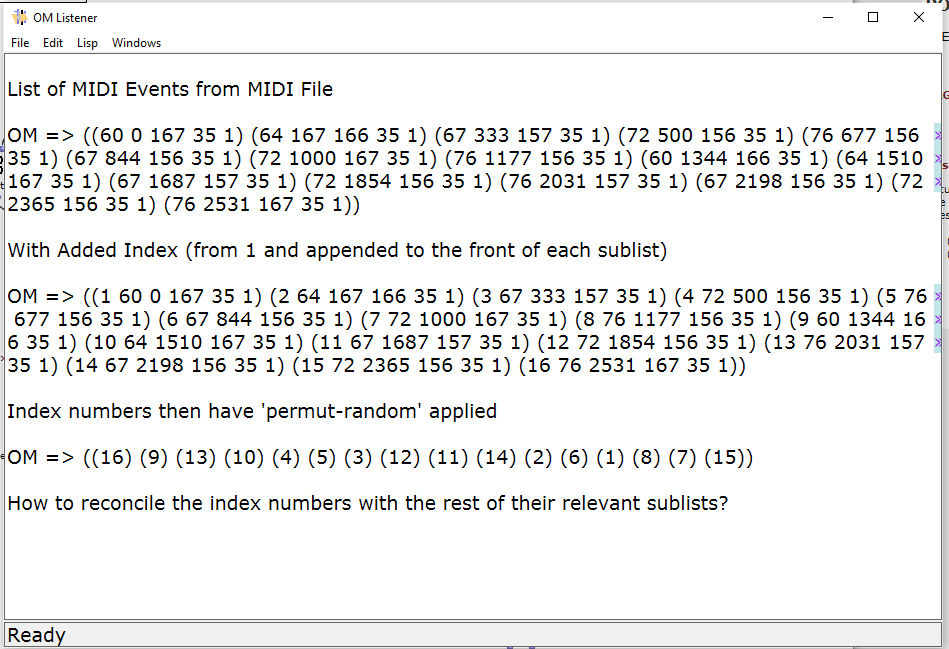I was wondering if it’s possible to have a ‘lookup’ function in OM similar to that of Excel, where an index number can be used as a reference to a list and recalled at a later stage?
To give a concrete example:
I’ve been using the ‘r-list-indexer’ LISP function from the OMRuben Library to add an index number to the front each note of a pre-existing MIDI file, and I want to apply various permutations to the index list only, and then recall the MIDI info relating to each index (preserving the pitch, duration and velocity information namely). Basically, reordering the notes.
I’m sure there’s a super-clever way to do this in OM but I’m stumped. Any suggestions very welcome!


